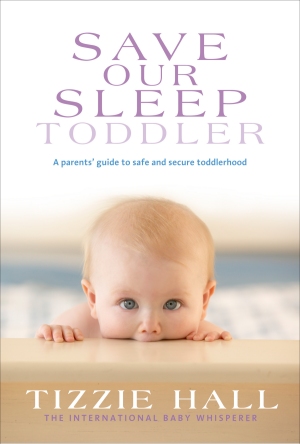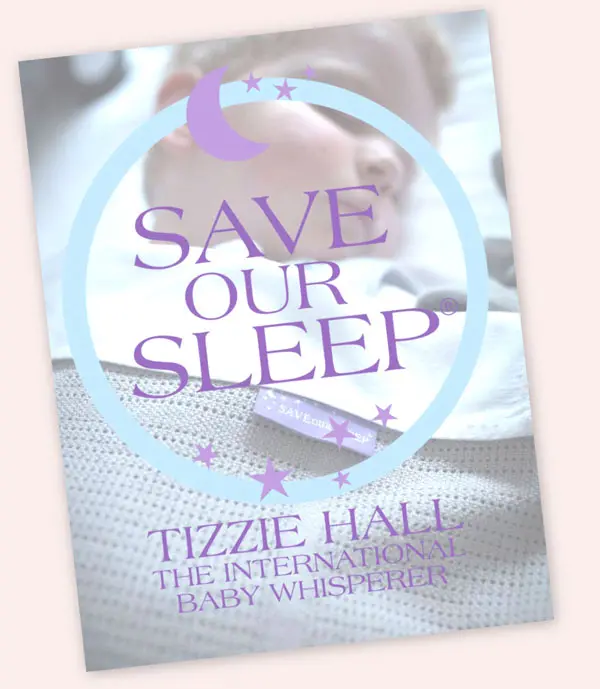Tantrums. The embarrassment of many family outings. Trust me, you are not alone!
Over many years of working with children I have observed four main categories of tantrums, discover what they are below…
Tantrums can include whingeing, crying, screaming, kicking, biting and hair-pulling.

1. Frustration tantrums. These tantrums are the result of a toddler not understanding the world around her, not being able to achieve something or not being able to communicate through speaking. For example, if a toddler is playing on a tiled floor that has a three-dimensional stone pattern, she may want to pick up a ‘stone’. She will become frustrated as she cannot understand why she cannot pick up the stone.
2. Speech tantrums. If a toddler is finding it difficult to communicate through speech this can lead to a tantrum. There is nothing you can do but encourage your toddler to use words and, in time, these speech-related tantrums will pass. Be aware that your toddler will find other ways to communicate with you and by looking for these signs you can help prevent some tantrums.
3. Temper tantrums. These tantrums are a learnt behaviour. The toddler has learnt that if she kicks up a big enough fuss her parents will cave in and give her what she wants.
4. Hunger tantrums. When a toddler is hungry but does not know why she is unhappy the easiest way to communicate her feelings is through a tantrum. Read my blog Is your child having a hunger tantrum?

I recently observed a sixteen-month-old who was pushing balls through the letterbox of his cubbyhouse. He was able to push the balls through until he came to the biggest ball, which was too large to fit through the letterbox. He did not understand that the ball was too big to fit and so he kept trying and trying to push it through. He became very frustrated and did not know how to express this frustration so he screamed and had a tantrum. In situations such as this it is worth sitting down with your toddler to explain the cause of her frustration. On this occasion I explained to the little boy that ‘this ball is small and this ball is big’ and showed him how the smaller ball fitted through the letterbox.
At first, when your toddler is very young, an explanation such as this will mean nothing. She will not understand, will not want to stop having a tantrum and will have no interest in what you are saying. But as she gets older it will start to sink in and she will learn from your explanation. But these tantrums often happen at the most inconvenient time, such as when you are out at a shopping centre. It is alright to feel frustrated and to pick your toddler up or to strap her into her stroller and walk away. It is not always possible to sit down and explain a frustrating situation to your toddler because to do so could attract unwanted attention from other shoppers.
Many frustration tantrums I have witnessed are caused by parents forgetting to communicate with their children. Parents who communicate well with their toddler at home seem to lose this gift the second they leave the house.
For example, take an eighteen-month-old child who at home tells her mum she wants a drink by pointing to the fridge or her drink cup. The mother sees the toddler’s actions and communicates with her by saying: ‘Would you like a drink?’ When the toddler nods she is given a drink. This will often be followed with added praise like: ‘Well done for telling Mummy you wanted a drink, you are a very clever girl.’ Then that same toddler is sitting in the supermarket trolley when she passes her favourite drink. Excited, she points it out to her mother using the same point and slightly different words to what she uses at home.
The toddler is excited because she has spotted the drink and is trying to say: ‘Mummy look, our drink!’ Rather than stopping and saying ‘Yes, it’s the same drink I give you at home’, and talking to her toddler about her discovery, the mother thinks, ‘Oh no, she has spotted the drink’, and gets out of that aisle as fast as she can. Her toddler starts to yell and has a frustration tantrum. She is not having a tantrum because she wants the drink, necessarily – it is her way of showing her frustration at not being understood. If her mother had stopped and talked to her, this tantrum could have been avoided.
In the past few years I have seen a trend in parents learning to use baby sign language with their babies, which can be a great way to help reduce the number of frustration tantrums a toddler has.
Baby sign language is the use of basic signs which helps bridge the gap of communication for pre-verbal toddlers. Use of these basic gestures can help your child to let you know what it is that they want or what they are thinking long before they develop the ability to speak.
A toddler who has learnt baby sign from a young age will have lots of signs to help her communicate while trying out new words. Another great reason to teach your baby to sign from a young age is it helps a baby develop self confidence, memory and can also help with bonding.
However, as discussed in Chapter 8, it is important your toddler is using words rather than signs from the age of two.
Toddlers feel safe and secure if they know what is going to happen and when it is going to happen. But parents often forget to let their child know something different is about to happen.
Try to look at things from your toddler’s perspective. She is playing nicely and has no idea of the time and you walk in and say: ‘Tidy up, it’s teatime.’ This can upset and frustrate her because she feels she has been cheated out of playtime.
A frustrated toddler will not know how to communicate her feelings so instead, she will have a tantrum. If you had come in and warned your toddler that in five minutes it would be time to pack up for tea you would most likely have had a cooperative child.

People often comment on the way I communicate with children, which surprises me because I do not mean to communicate in any special way. I just talk to a baby, toddler or child in nearly the same way as I would an adult. I believe the comments stem from the fact that I try to see the world from the children’s eyes and treat them accordingly.
I often watch parents and see them working away in the kitchen cleaning up and then when the breakfast dishes are done they walk over to their toddler who is happily playing and scoop her up to get her dressed. This is done with no warning and the mother does not talk to the toddler as she carries her to the change table. When the toddler starts to tantrum the parent asks me why.
I believe part of the problem was the mother’s lack of communication with her toddler. Look at it from the toddler’s point of view: she was sitting in the playroom playing and talking to her doll or thinking about what she was going to do next when suddenly her train of thought was interrupted by Mummy, who picked her up and took her away. This made her cross and upset and the only way she could communicate this was through a tantrum.
Mummy knew once she got the kitchen clean she was going to take her to get dressed, but why did she not say anything to her toddler? Perhaps she thought her toddler would not understand. In this situation I ask the mother to try a new approach. When she takes her toddler to the play area she should say: ‘Mummy is going to clean up the dishes and then come and get you. I will take you and get you dressed and then we are going to Flynn’s house for a play.’ Then, as she puts her down she adds: ‘Okay, you can play for about five minutes.’ I advise parents to keep reminding their toddler what is going to happen; for example, as she cleans up the dishes she could say: ‘I’ll be over to get you in two minutes’, and so on.
When mothers follow this advice when they go to pick up their toddler she is expecting it and understands why Mummy is taking her away from her doll. I believe if you talk to your toddler in the same way you would a five-year-old you will be surprised at how much she understands.

I class temper tantrums as a learnt behaviour for a child to get her own way and consider them to be a behaviour that needs to be corrected. Tempter tantrums occur because a toddler has asked for something and her parents have said ‘no’. She has asked again, and her parents have again said ‘no’. But when the toddler has tested the boundary by having a small tantrum or screaming, the parents have caved in and given her what she asked for in the first place. The toddler has learnt that if she kicks up a big enough fuss ‘no’ will eventually turn into ‘yes’.
In households I visit I often observe that children from the age of one to sixteen years have learnt that if they do not like the decision of their parent and they cry, scream, kick, hit, bite or even hold their breath, the decision will be reversed. In these situations I teach parents to set boundaries to correct this behaviour. The age of the child and the severity of the tantrums will determine whether it will be quick or take a long time to correct the problem. The key to correcting temper tantrums is a calm, consistent approach. Do not expect temper tantrums to disappear overnight. You and you partner need to set a few days or a week aside to do nothing but work together as a team on correcting your child’s tantrums.
A trick I have used is to set tantrums up to happen when the parents have time to put into correcting them. For example, if your toddler loves yoghurt and asks for one every time you open the fridge and then has a temper tantrum when you refuse to give her one, I suggest you hide the yoghurts until you have time to allow her to tantrum as long as she wants, which could be anything from 40 minutes to two hours. When you are feeling confident and have the time, start taking a few things out of the fridge to rearrange it and put the yoghurts in sight of your toddler. When she asks for one, tell her she can have one after her next meal and allow the tantrum to start.
Do not give in but make sure your toddler is in a safe place so she does not hurt herself while she is having a tantrum. With a young toddler an option is to place her in a portable cot while telling her: ‘Mummy doesn’t want to listen to that noise. You can get out when you stop making that noise.’ But it is very important that you are consistent in your approach to tantrums. So if the portable cot will not always be available when your toddler is having a tantrum at home, it is best not to use it at all.

You will need to ignore the tantrum until it ends. Do not try to talk to your toddler and do not make eye contact with her. In fact, try to find an activity to distract yourself. Call a friend, have a cup of coffee with your partner or watch TV – anything to show your toddler you are not interested in her tantrum. Each time your toddler has a temper tantrum the protest and actions will last for a shorter time until she realises you have become a strong, calm and consistent parent and she will stop testing the boundaries on a daily basis.
I often come across parents who are very frustrated because they ask their toddler to do something or they will do something for their toddler and the toddler does the opposite of what they want. For example, each time they put a coat on their two-year-old she takes it off. Or their three-year-old refuses to put her shoes on. You will need to tell your two-year-old you are not going to the park until she keeps her coat on or, in the case of the three-year-old, until she puts on her shoes.
Explain to her that you are going to the park so she can play on the swings and the slides and it will be very exciting, but you cannot go until she leaves her coat on or puts on her shoes. But do not take on the challenge of setting this boundary until you have time to see it through.
If you have arranged to meet a friend in the park at 2.30 pm, and it is 2.20 pm and you have a ten-minute walk ahead of you, now is not the time to take on the challenge. If you have no appointment and it takes two hours before your two-year-old decides to keep her coat on then it is not a problem if you need to spend the afternoon at home instead of going to the park.

Hunger tantrums usually occur close to regular mealtimes and typically the child is ratty, screams and cries and doesn’t want to do anything. She doesn’t want to put her coat on; she doesn’t want to do a jigsaw. She acts as if she doesn’t know what she wants. She is irrational and everything is too hard.
You can read my blog on HUNGER TANTRUMS here


Join our newsletter and receive a FREE download of the world famous Save Our Sleep Safe Bedding Guide delivered straight to your inbox!
PLUS you will also receive a thank you gift offer shortly after.